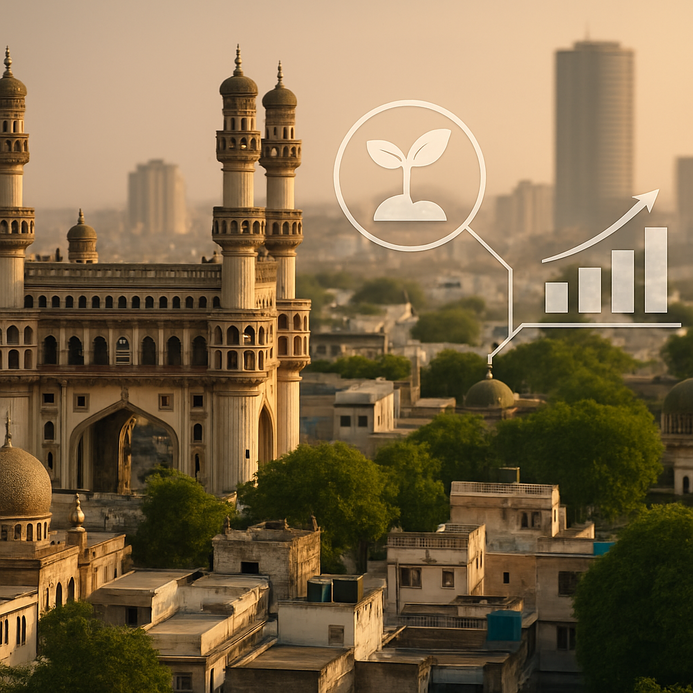Lower EMIs, Higher Savings: RBI Repo Rate Cut Impacts
Introduction

In a surprising move, the Reserve Bank of India (RBI) recently cut the repo rate by 25 basis points, bringing it down to 6.25%. This decision comes as a welcome relief for consumers struggling with inflation and the rising cost of living. Lowering the repo rate directly impacts interest rates on loans, making them more affordable for both new and existing borrowers. But what does this mean for the economy and borrowers in the long run?
What is repo rate?
The repo rate (repurchase rate) is the interest rate at which the central bank provides short term loans to commercial banks that are facing a fund shortage. It is the cost banks pay to borrow money from the central bank using government securities as collateral. This system helps central banks control liquidity and ensure monetary stability in the economy. The central bank regulates how much money is available for lending and spending. If there is too much liquidity (excess money supply), it can lead to inflation. If there is too little, it can slow down economic growth. By adjusting interest rates and liquidity, the central bank keeps inflation, exchange rates, and overall economic conditions stable. This helps maintain confidence in the financial system, ensuring steady economic growth.
The reverse repo rate is the interest rate at which the central bank of a country borrows money from commercial banks by allowing them to park their excess funds with it. In India, the RBI uses the reverse repo rate as a key monetary policy tool to regulate liquidity in the market. When needed, the RBI borrows funds from commercial banks and pays them interest based on the prevailing reverse repo rate, which is usually lower than the repo rate. This mechanism helps control cash flow in the economy. During periods of inflation, the RBI raises the reverse repo rate to encourage banks to deposit more funds with the central bank, reducing the amount of money available for lending.

New policy launched by RBI
As of April 2021, RBI’s repo rate stands at 4% and reverse repo rate at 3.35%. The repo rate was reduced by 40 basis points from 4.4% to 4% and the reverse repo rate was pegged at 3.35% in May 2020. RBI has kept these crucial rates unchanged since the last five sessions to accommodate the current economic situation.
After nearly five years, the Reserve Bank of India (RBI) has finally provided much needed relief to home loan borrowers. In its monetary policy meeting on February 7, 2025, the central bank announced a 25 basis point reduction in the repo rate, marking the first rate cut since May 2020. The rate cut is expected to have a direct impact on home loan affordability, as lower repo rates typically lead to reduced lending rates by commercial banks. For both existing and new borrowers, this means lower equated monthly installments (EMIs), easing financial strain and improving purchasing power.
Coupled with the government’s recent revisions in tax slabs, higher TDS exemption limits on rental income, and increased deductions on home loan interest, this move is set to boost liquidity in the hands of consumers. Beyond individual borrowers, these measures are likely to strengthen overall sentiment in the real estate market. Increased affordability and disposable income can drive higher demand across various residential segments, encouraging more people to invest in homeownership. With housing being a key driver of economic growth, this policy shift could have far reaching effects, not just in boosting real estate activity but also in contributing to broader economic stability.
Impact on home buyers?

Beyond the real estate sector, the repo rate reduction has a ripple effect on the economy, enhancing consumer spending. As borrowing becomes more accessible, both individuals and businesses stand to benefit, fostering long term financial stability.
Calculation:
If you take a home loan of ₹30 lakh for 20 years, even a small reduction in interest rates can lead to big savings over time. But how much can you actually save?
Let’s take an example of Indian banks with over 150 branches, all cutting their interest rates by 0.25% (25 basis points). Before the rate cut, a ₹30 lakh home loan with a 20-year tenure (240 months) had a fixed interest rate of 8.50%. This meant a monthly EMI of ₹26,035 and a total interest payment of ₹32,48,407 over the loan term.
After the repo rate cut, the interest rate dropped to 8.25%. This lowered the EMI to ₹25,526, reducing the total interest paid to ₹31,26,232. As a result, borrowers save ₹1,22,175 over 20 years, which translates to ₹509 in savings per month. Even a small change in interest rates can make a significant difference in long-term financial planning
How will it affect home developers?
- Increased Home Sales
Lower interest rates make home loans more affordable, encouraging more buyers to enter the market. Better EMIs increase financial buying power thus creating more market demand for homes. The decline in unsold property stock results in stabilised residential prices together with enhanced market sentiment. - Improved Liquidity in the Market
Increased sales result in better developer cash flow which eases their financial burden. Healthy lending portfolios develop when banks receive better loan reimbursements. Market liquidity improves as a developing real estate sector draws additional investors into the marketplace. - Boost for Real Estate Developers
Developers achieve revenue growth by clearing their existing stock which lowers holding expenses. Housing developers launch new building projects because higher demand exists in the market which expands available residential supply. Better interest rates on funding allow developers to execute projects at superior profitability levels. - Acceleration of New Project Launches
Better financial conditions help developers make confident investments for new home development projects. An increased supply of new housing properties matches upward pressure on demand which preserves market stability. - Job Creation and Economic Growth
A growing real estate market creates employment opportunities which span from building and indoor decoration to architectural roles. The increased requirements for materials and workforce together with required services trigger growth in several economic sectors.
Conclusion
The Reserve Bank of India’s decision to cut the repo rate is a significant step toward boosting economic activity, especially in the housing sector. Lower interest rates translate into reduced EMIs, making home loans more affordable for buyers and improving overall market sentiment. This not only encourages homeownership but also helps developers clear unsold inventory, improve liquidity, and launch new projects with greater confidence. While this move brings immediate relief, its true impact will depend on how banks pass on the benefits to consumers and how market dynamics evolve. For homebuyers and investors, now may be the right time to capitalise on favourable lending conditions and make strategic financial decisions.
FAQs
After the repo rate cut, the interest rate on a ₹30 lakh home loan for 20 years drops from 8.50% to 8.25%, reducing the EMI from ₹26,035 to ₹25,526. This results in a monthly saving of ₹509 and a total savings of ₹1,22,175 over the loan tenure.
The RBI repo rate directly affects home loan interest rates, as banks borrow from the central bank at this rate. When the repo rate is reduced, banks get funds at a lower cost and often pass on the benefit to borrowers by lowering home loan interest rates. This leads to reduced EMIs, making home loans more affordable. If the RBI raises the repo rate, home loan interest rates increase, making borrowing more expensive.
Yes, the repo rate affects fixed deposit rates. When the repo rate drops, banks may lower FD interest rates, and when it rises, FD rates generally increase to attract more deposits.













